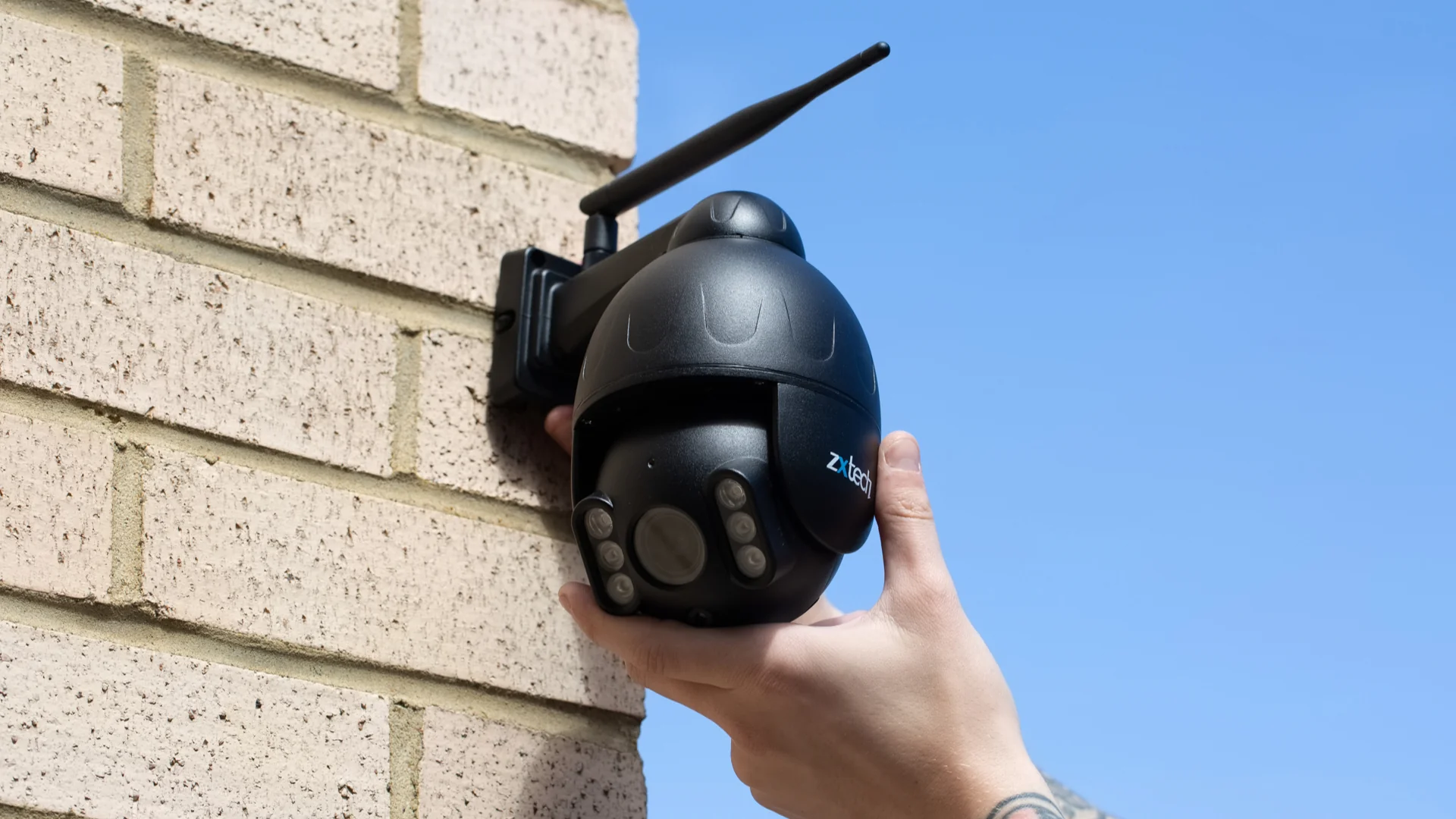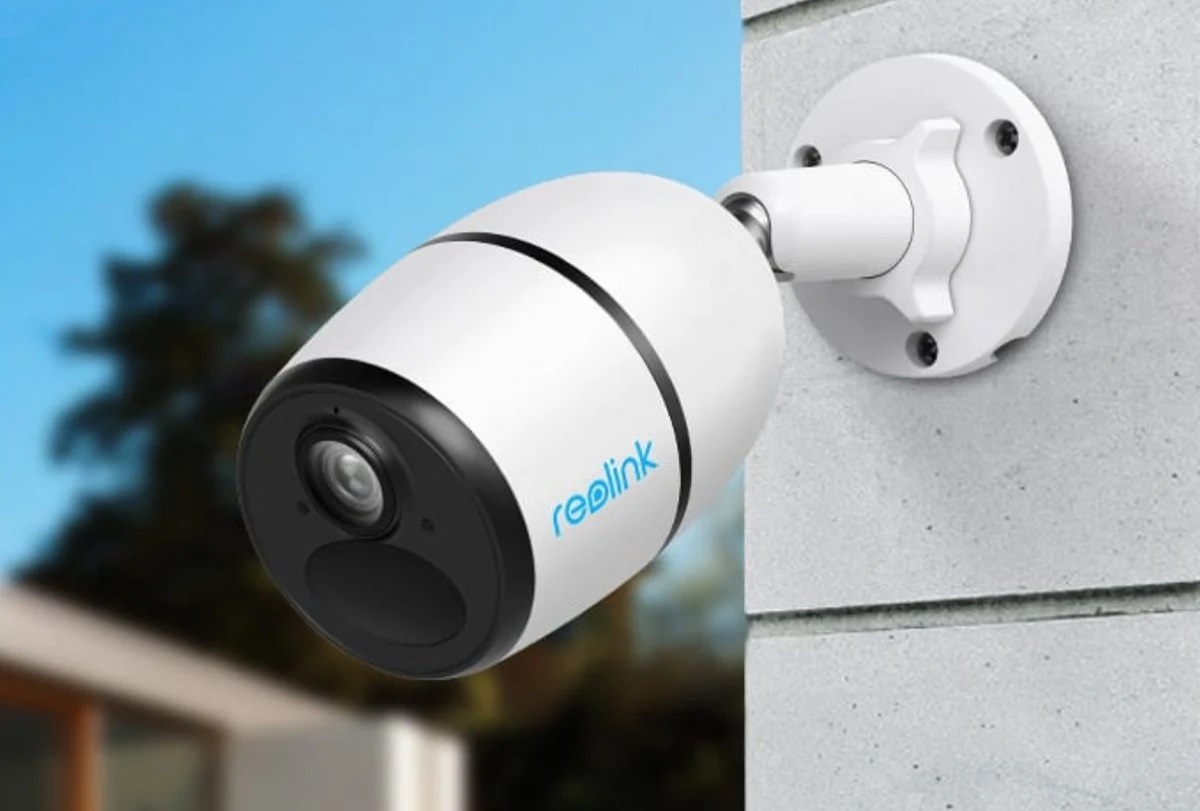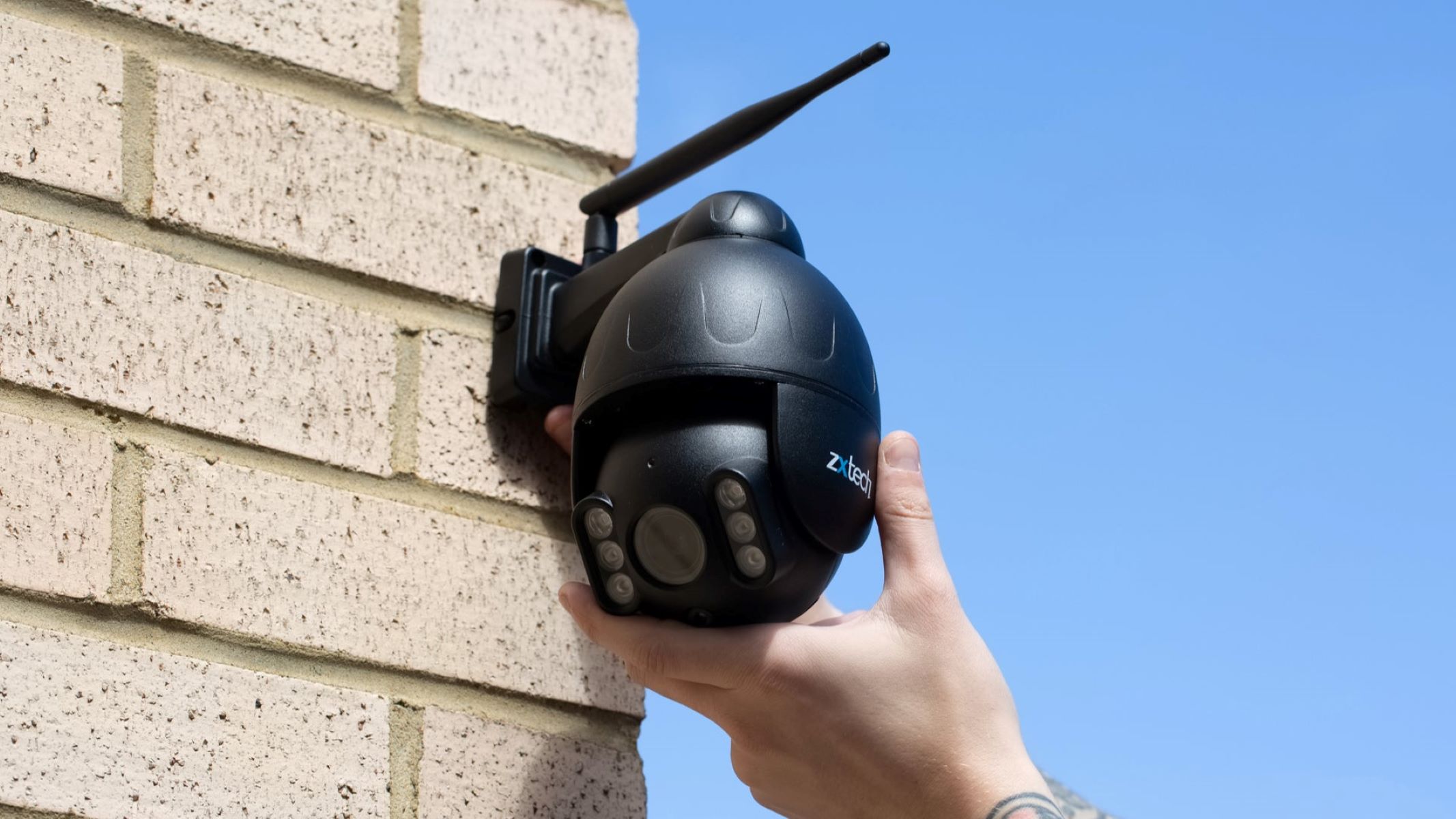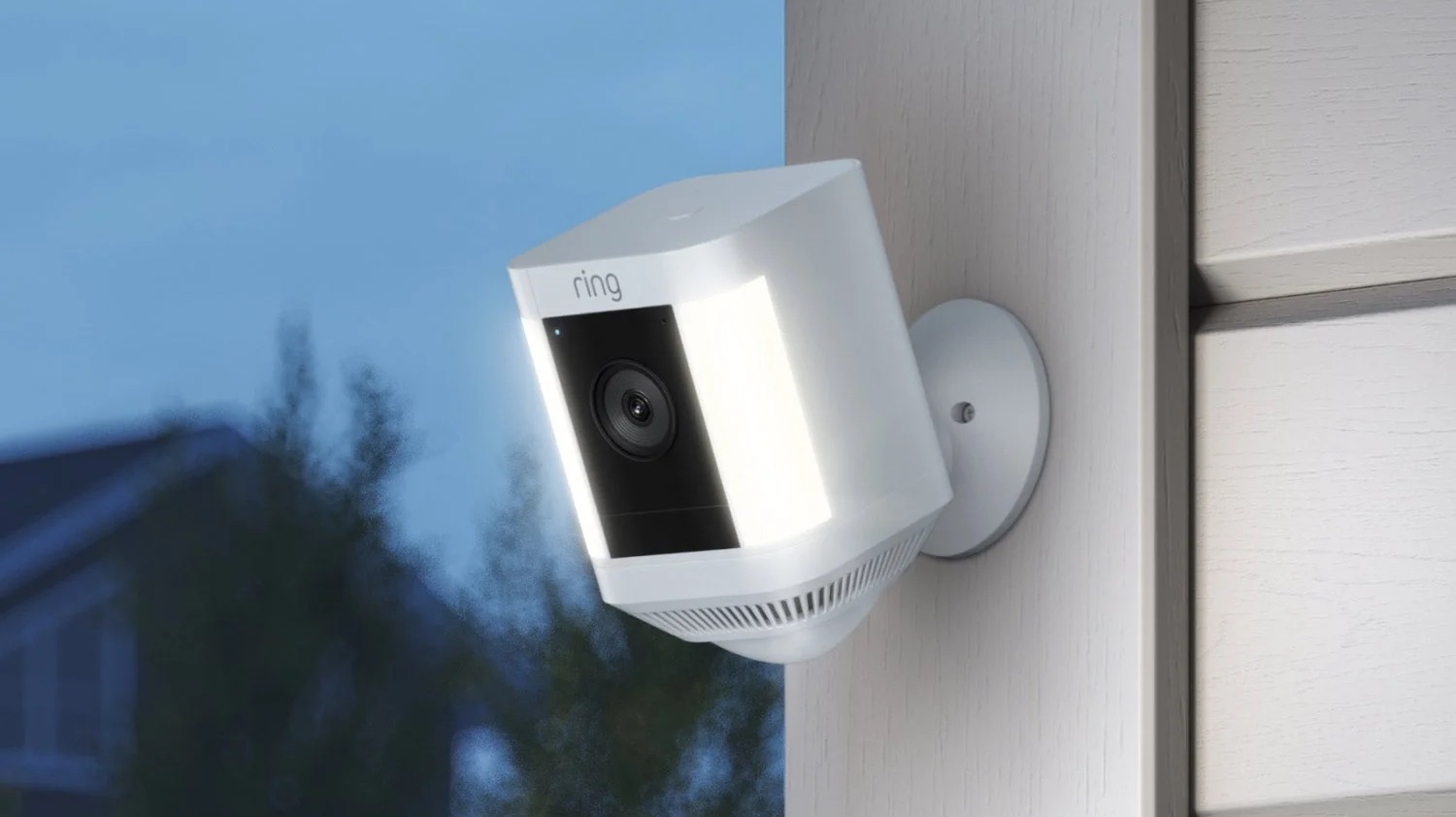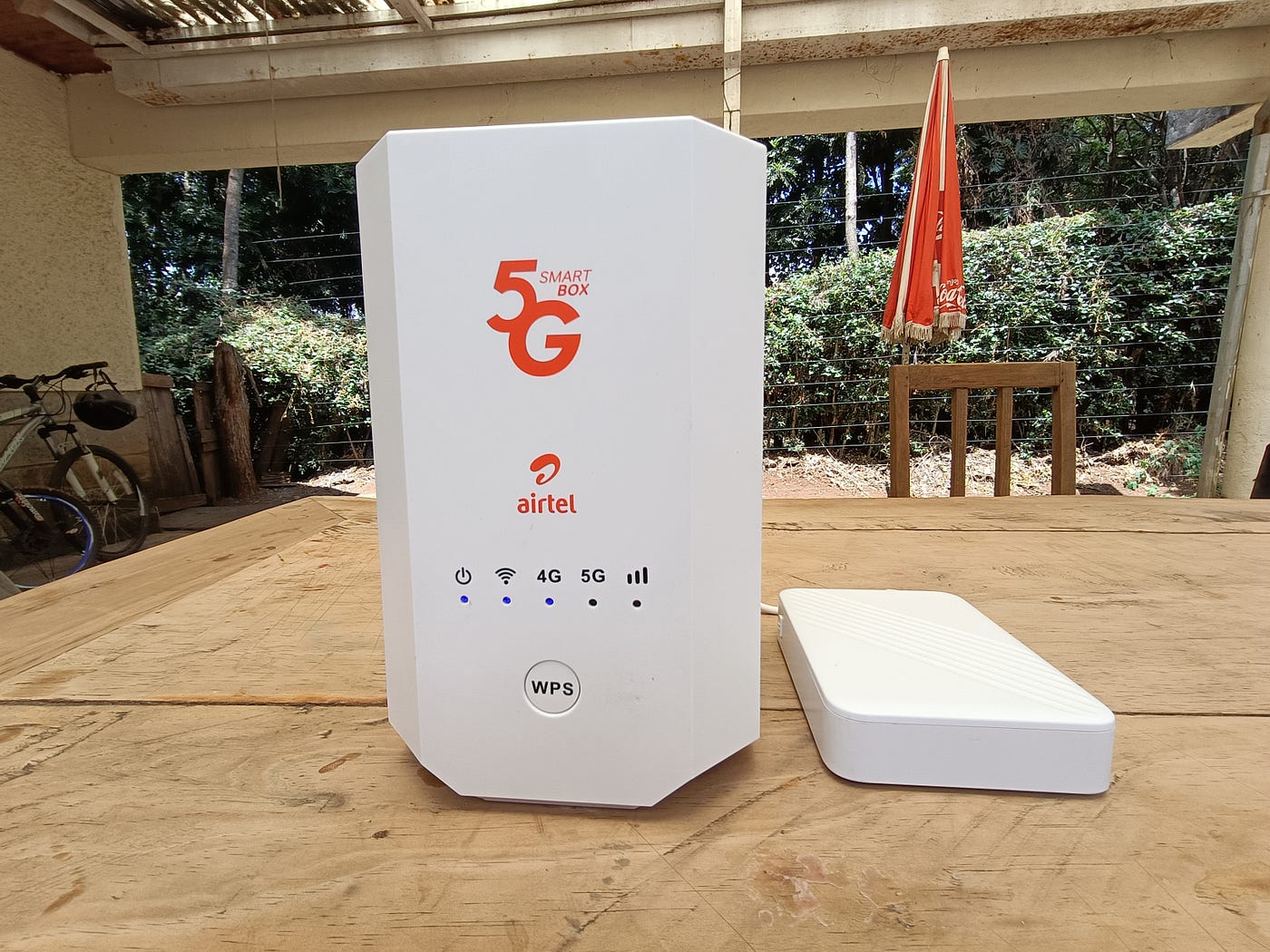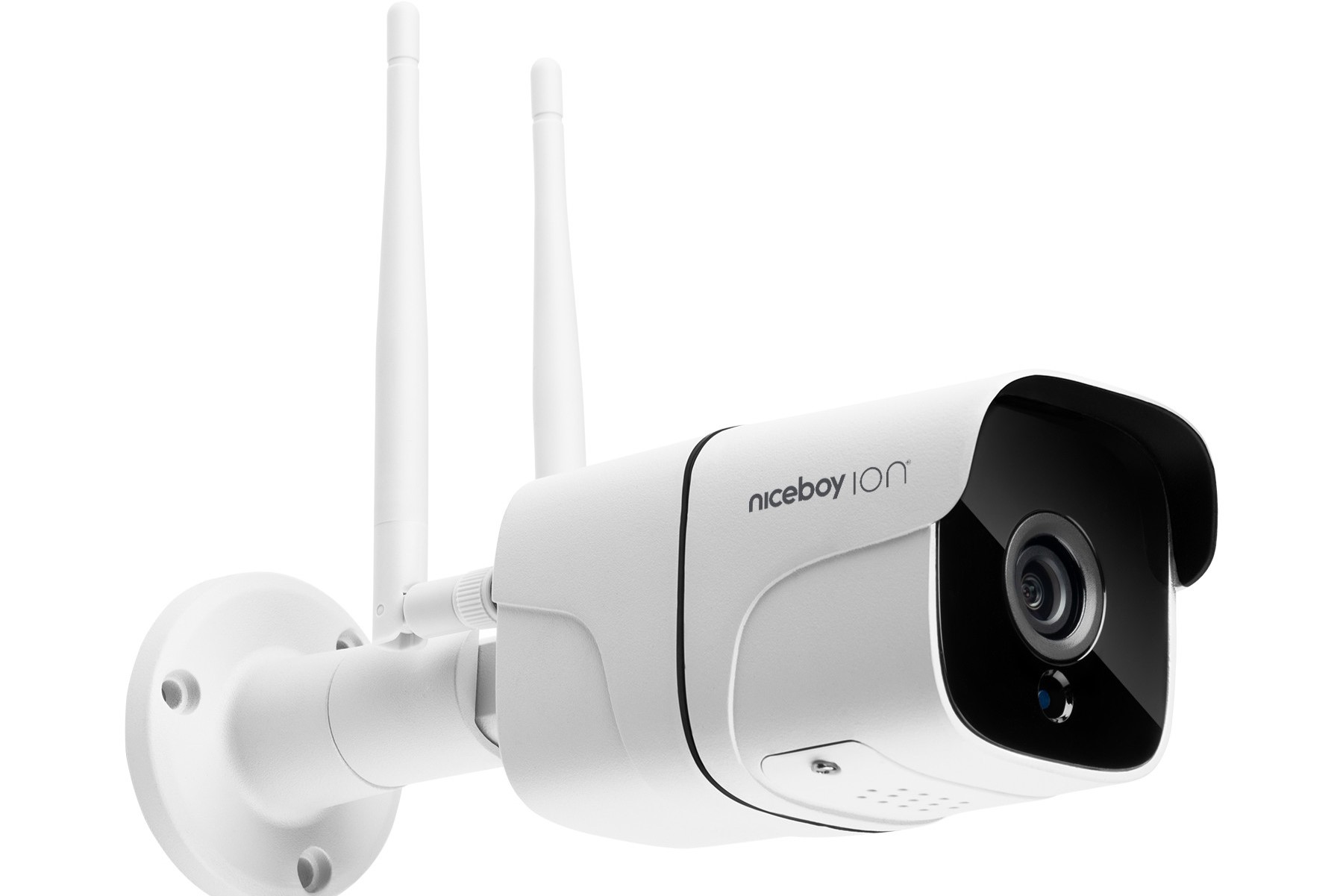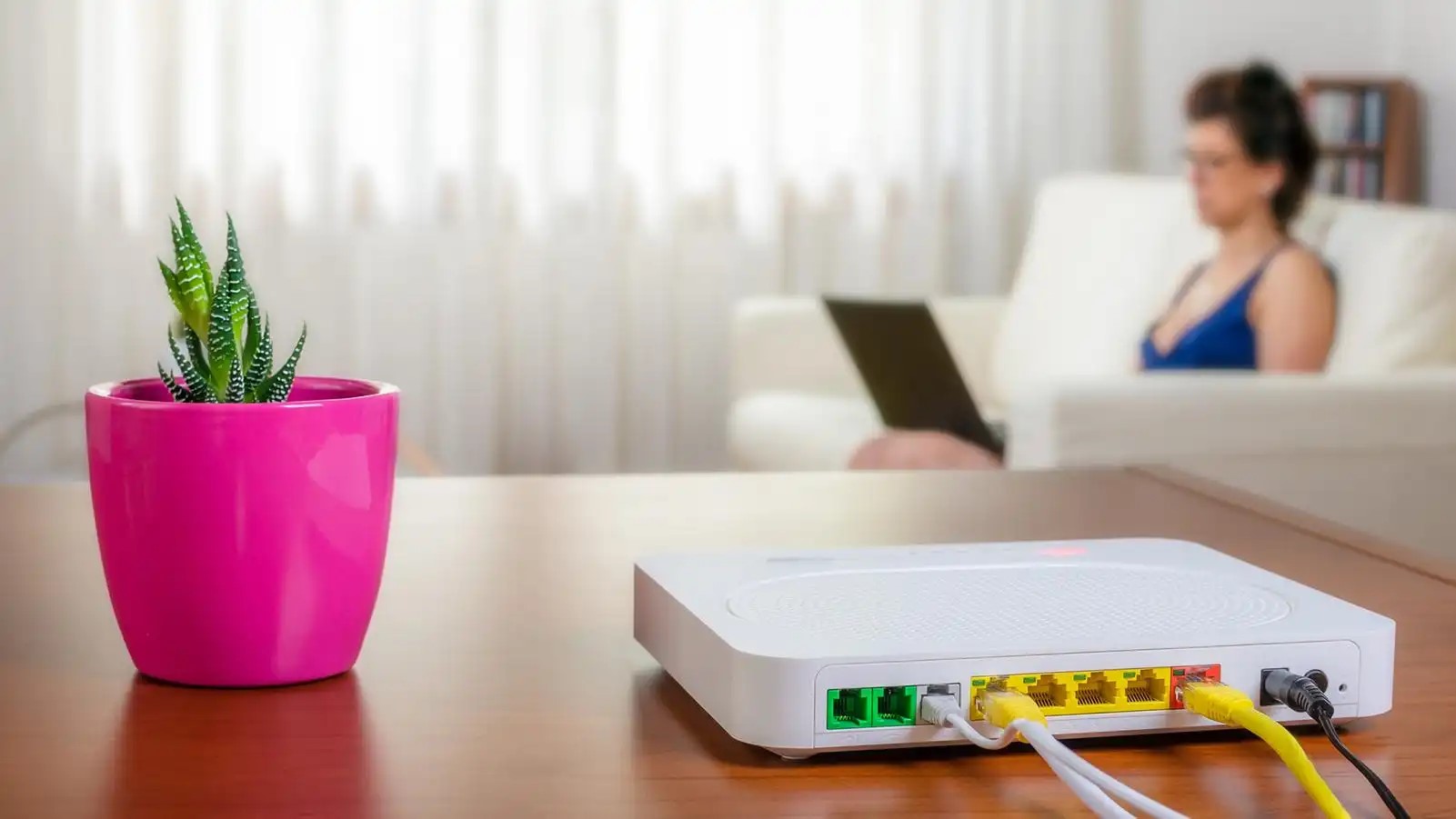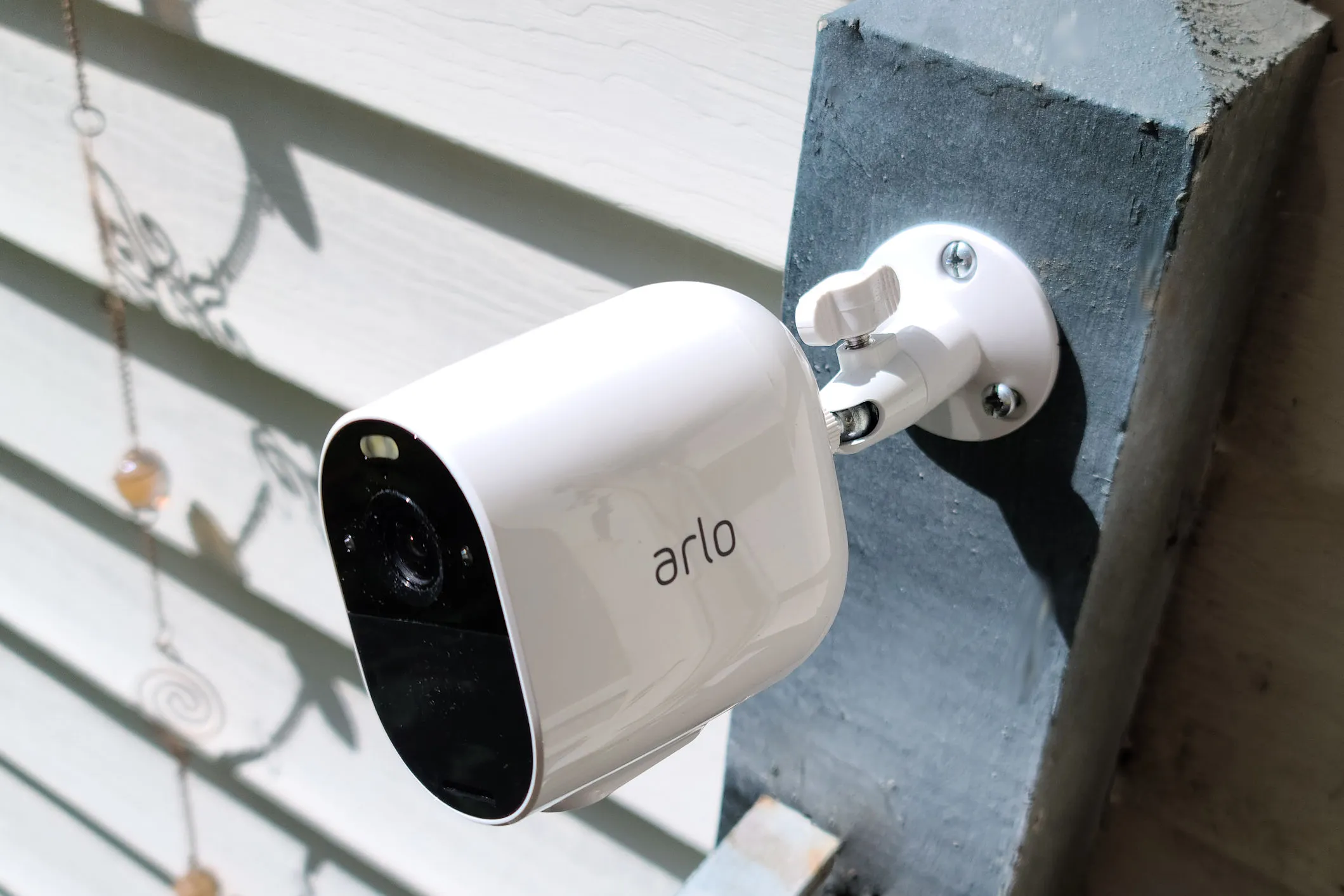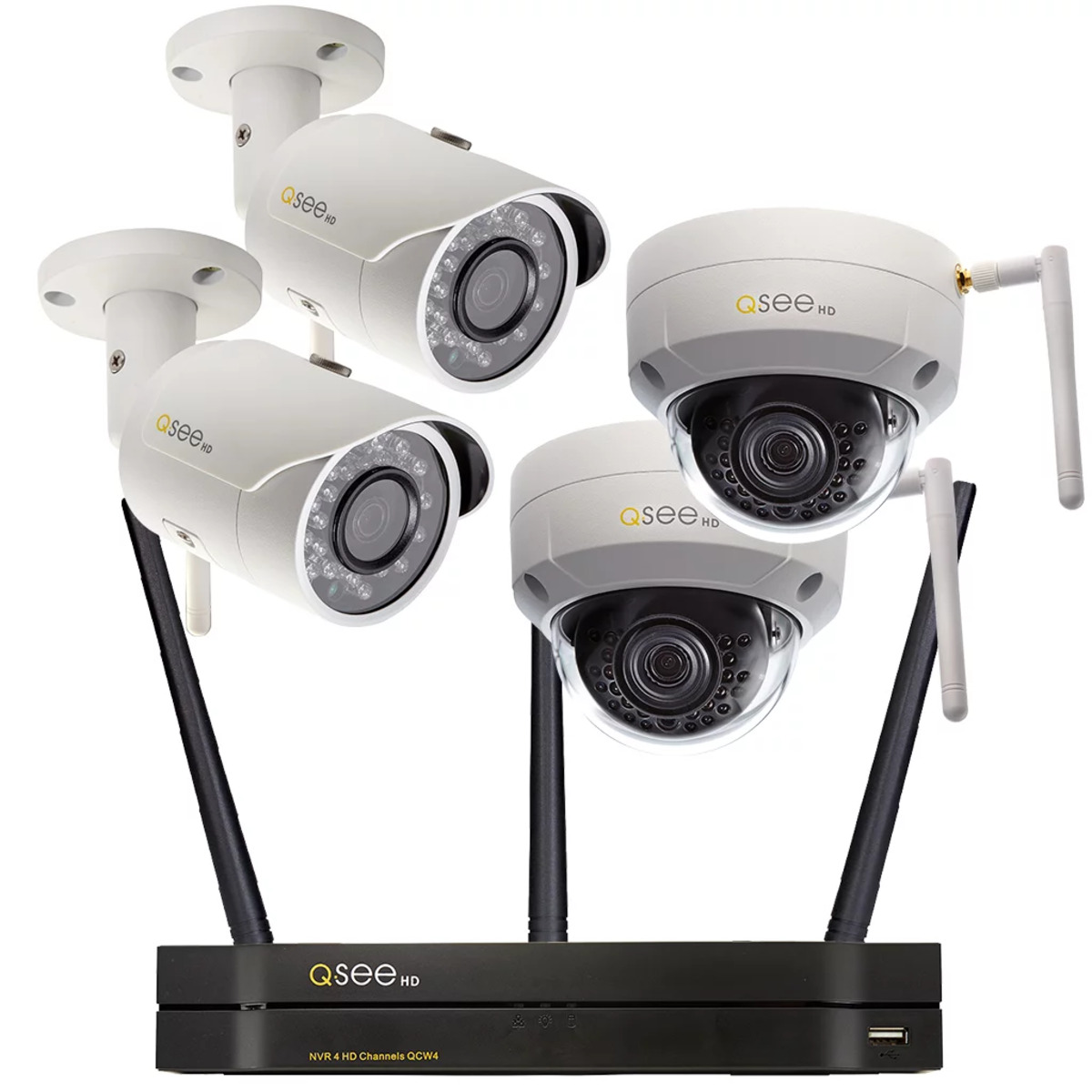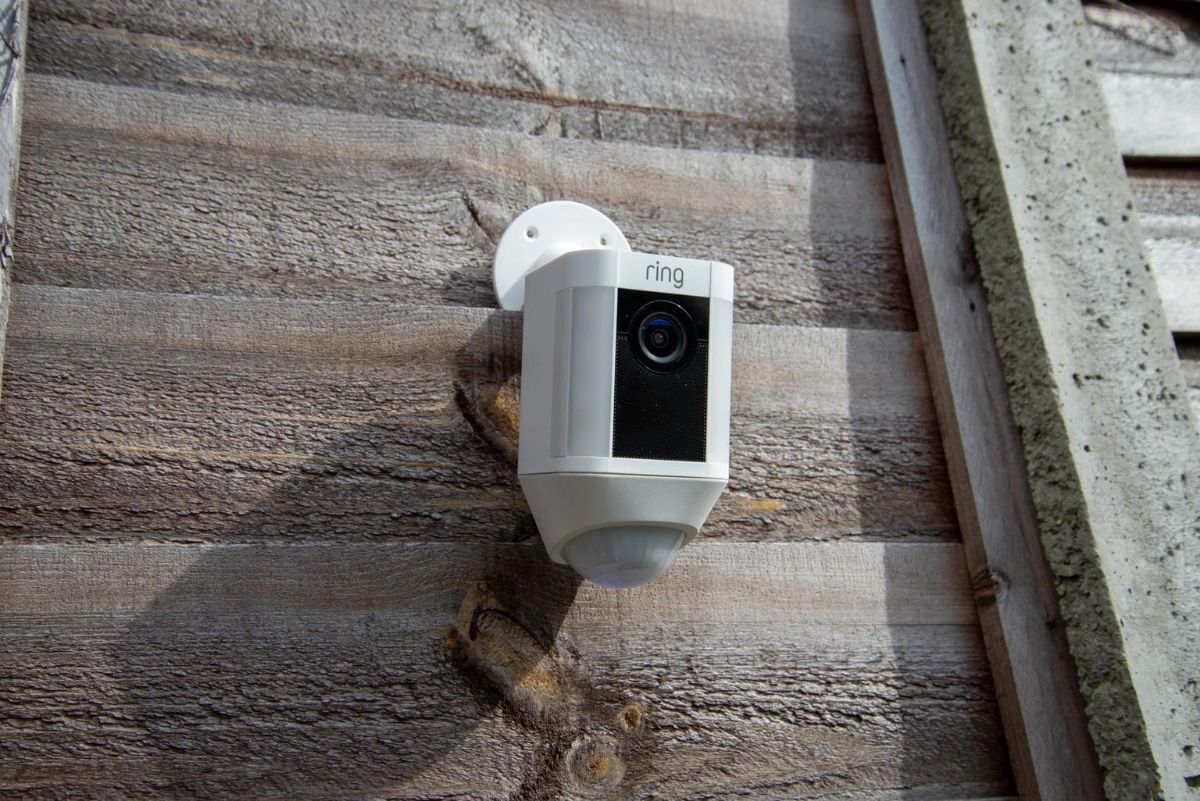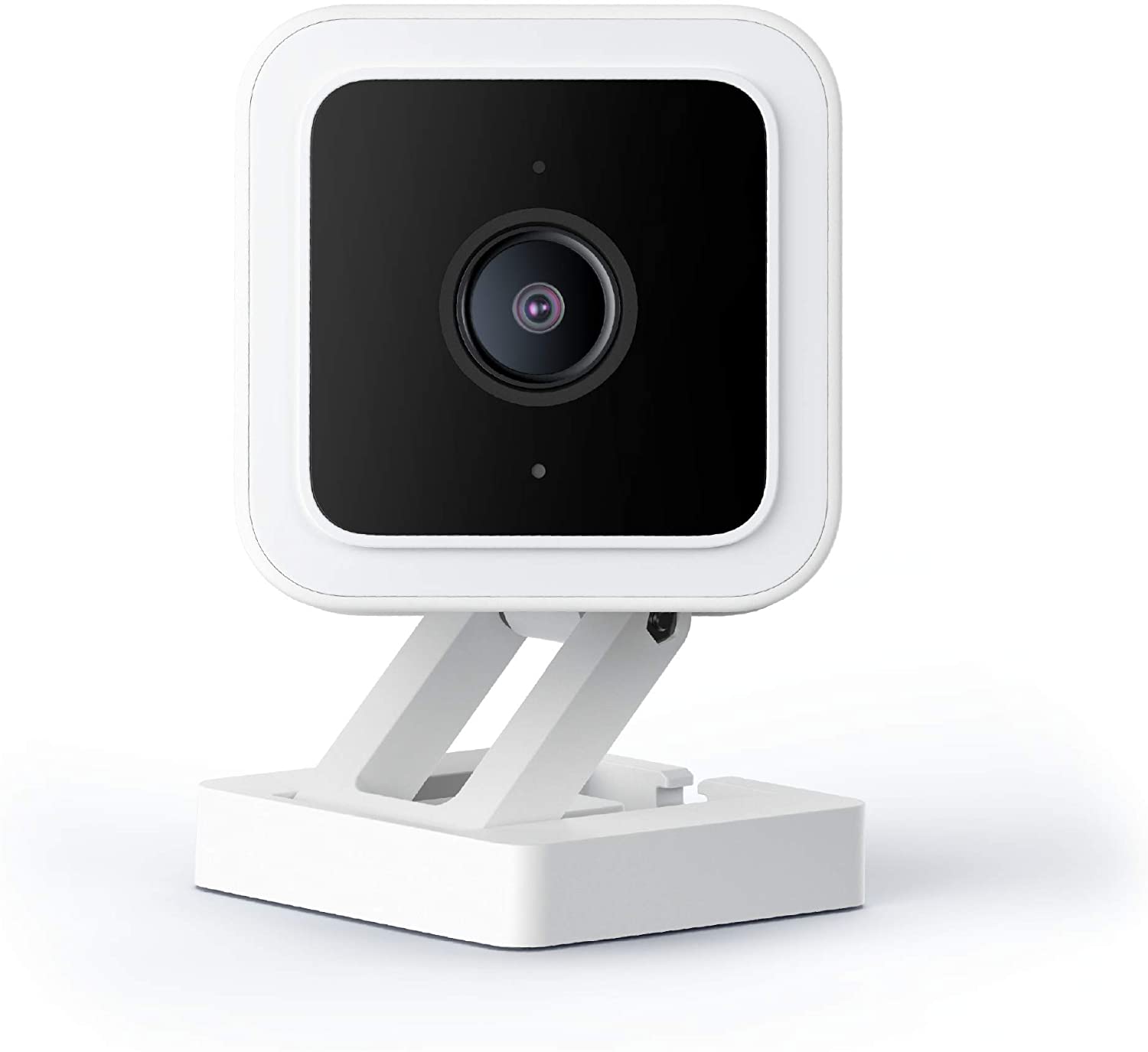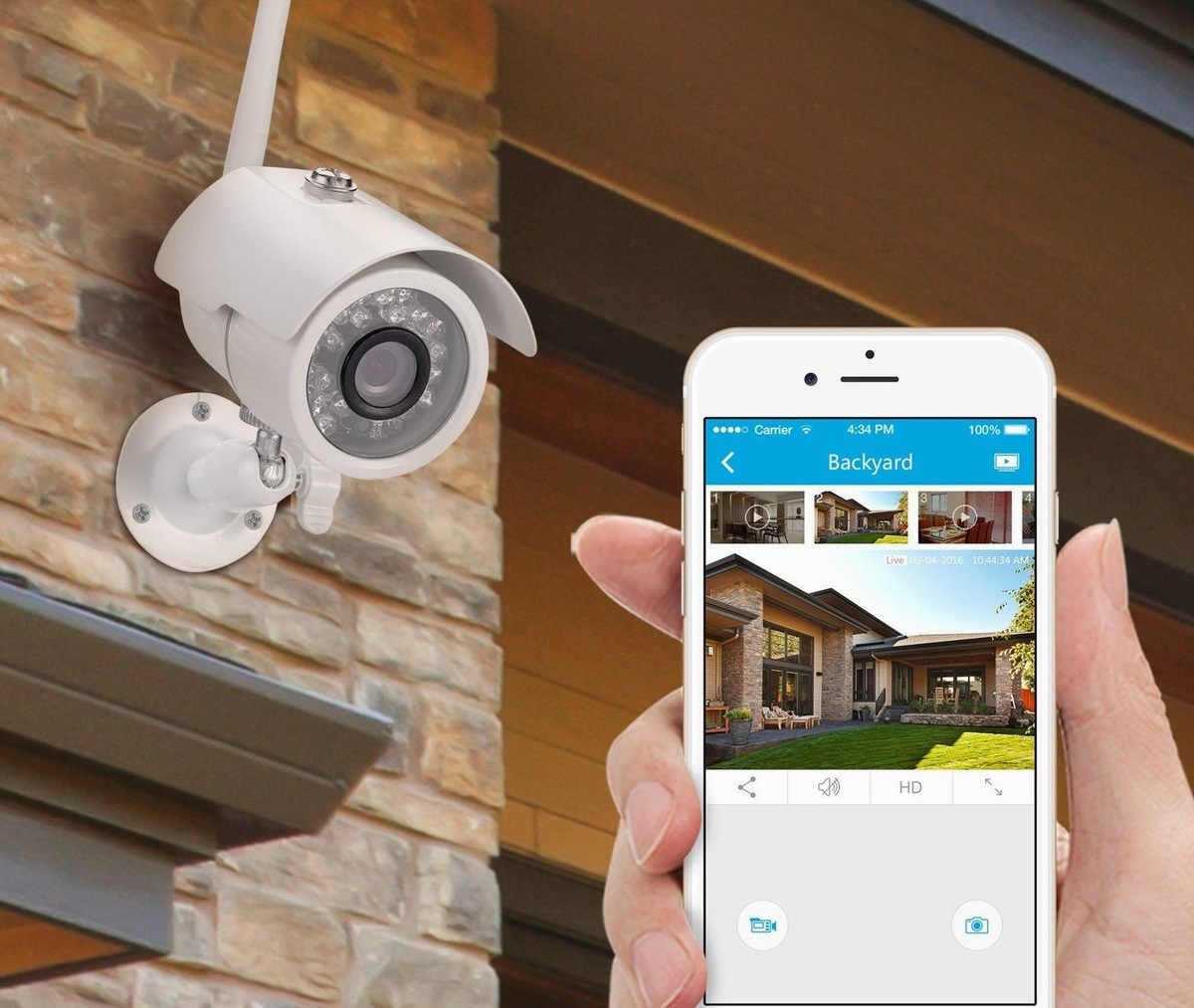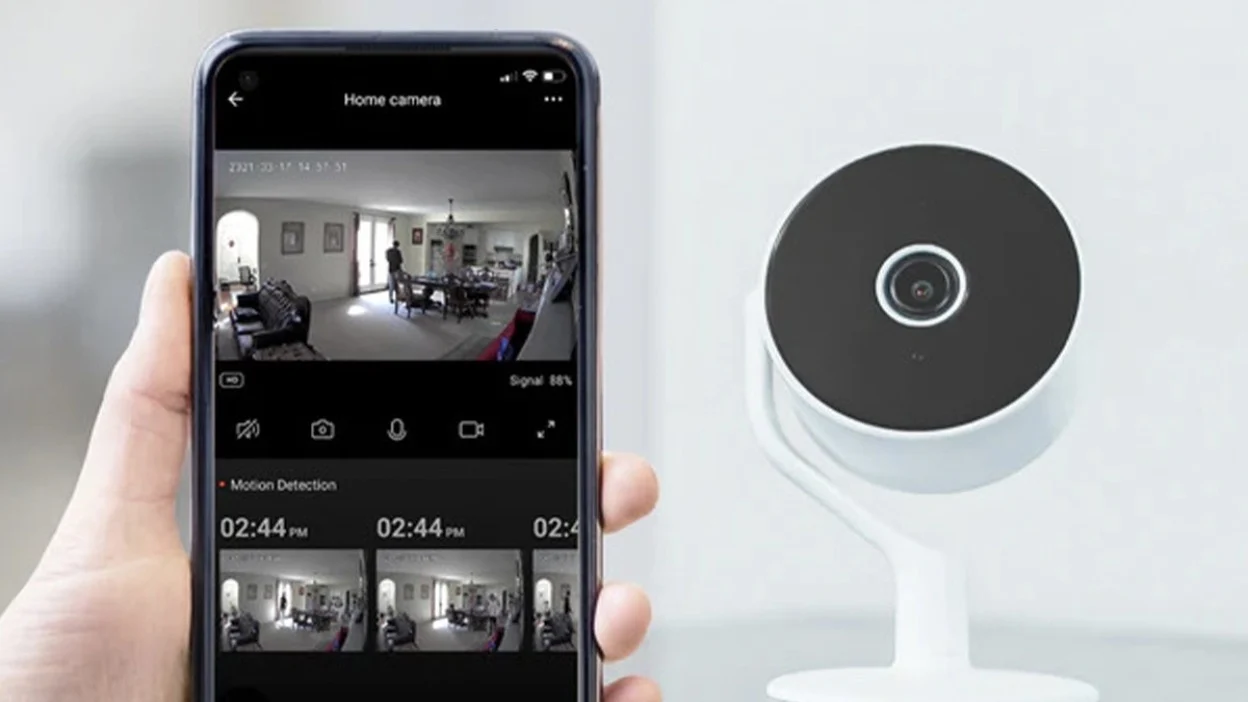Home>Home Security and Surveillance>What Security Camera Works With 5GHz Wi-Fi
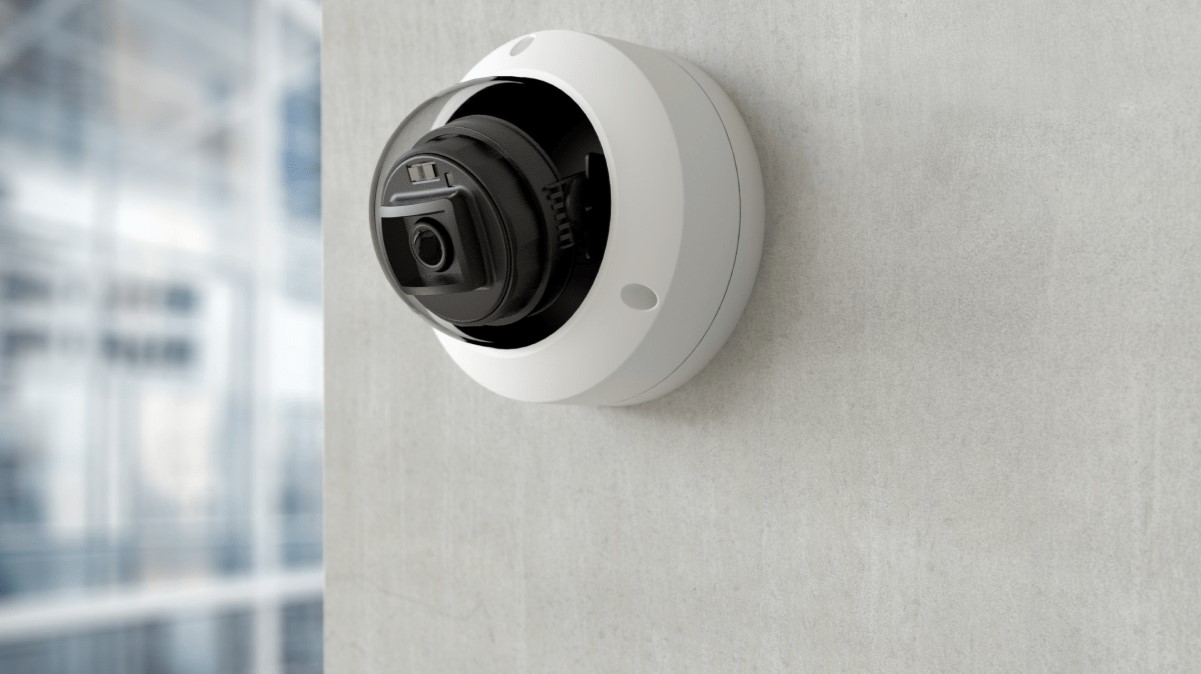

Home Security and Surveillance
What Security Camera Works With 5GHz Wi-Fi
Modified: November 1, 2024
Looking for a home security and surveillance camera that works with 5GHz Wi-Fi? Discover the best options and enjoy fast and reliable connectivity for your peace of mind.
(Many of the links in this article redirect to a specific reviewed product. Your purchase of these products through affiliate links helps to generate commission for Storables.com, at no extra cost. Learn more)
Introduction
Welcome to the world of home security and surveillance, where technology provides us with peace of mind and protection. With the advancement of wireless networks, it has become easier than ever to set up security cameras in our homes and monitor them remotely. One crucial aspect of wireless connectivity is Wi-Fi, which allows us to connect our devices to the internet without the hassle of wires.
In recent years, 5GHz Wi-Fi has gained popularity due to its faster speeds, lower interference, and broader bandwidth compared to the traditional 2.4GHz Wi-Fi. This means that devices connected to 5GHz Wi-Fi can transmit data at higher speeds, making it ideal for streaming videos, online gaming, and other bandwidth-intensive activities.
When it comes to security cameras, having a reliable and stable internet connection is crucial for seamless video streaming, real-time notifications, and remote access. Therefore, it is essential to choose a security camera that is compatible with 5GHz Wi-Fi if you have it available in your home.
In this article, we will delve into the compatibility of security cameras with 5GHz Wi-Fi and recommend some of the best options available in the market. We will also explore the features and specifications of these cameras, provide installation and setup tips, and address troubleshooting issues that may arise. Whether you are new to home security or looking to upgrade your current system, this guide will help you make an informed decision on which security camera will work best with your 5GHz Wi-Fi network.
Key Takeaways:
- Upgrade your home security with 5GHz Wi-Fi compatible cameras for faster streaming, real-time notifications, and reliable connectivity. Stay connected and protected with top recommended options in the market.
- Ensure seamless installation and troubleshoot common issues with 5GHz Wi-Fi security cameras. Prioritize camera placement, optimize signal strength, and secure your network for enhanced home surveillance.
Read more: What Security Cameras Work On 5Ghz Wifi
Understanding 5GHz Wi-Fi
Before we dive into the compatibility of security cameras with 5GHz Wi-Fi, let’s take a moment to understand what 5GHz Wi-Fi is and why it is gaining popularity.
Wi-Fi, also known as Wireless Fidelity, is a technology that allows devices to connect to the internet wirelessly. Traditionally, Wi-Fi networks operated on the 2.4GHz frequency band, which was widely adopted due to its long-range and compatibility with older devices. However, with the increasing number of connected devices and the demand for faster internet speeds, the 2.4GHz band became crowded and prone to interference from various sources such as Bluetooth devices, microwave ovens, and other Wi-Fi networks in the area.
To address these issues, a new frequency band, 5GHz, was introduced. Operating on a higher frequency, 5GHz Wi-Fi offers several advantages over the 2.4GHz band:
- Faster speeds: 5GHz Wi-Fi can transmit data at higher speeds, making it ideal for bandwidth-intensive activities like streaming HD videos and online gaming.
- Lower interference: With fewer devices operating on the 5GHz band, there is less interference from neighboring networks and other devices, resulting in a more reliable and stable connection.
- Broader bandwidth: The 5GHz band has more available channels, allowing for greater bandwidth allocation and reducing congestion on the network.
While the benefits of 5GHz Wi-Fi are enticing, it is important to note that it has a shorter range compared to the 2.4GHz band. This means that the signal strength may weaken as you move farther away from the wireless router. However, this can be mitigated by strategically placing your router and using range extenders or mesh Wi-Fi systems to ensure full coverage in your home.
When it comes to security cameras, the adoption of 5GHz Wi-Fi is beneficial as it allows for high-quality video streaming, reduces latency, and provides a more reliable connection. It is particularly advantageous if you have multiple devices connected to your network or live in an area with numerous Wi-Fi networks in close proximity.
Now that we have a better understanding of 5GHz Wi-Fi and its advantages, let’s explore the compatibility of security cameras with this technology and find the best options available in the market.
Compatibility of Security Cameras with 5GHz Wi-Fi
When choosing a security camera for your home, it is essential to ensure that it is compatible with your 5GHz Wi-Fi network. Not all security cameras support the 5GHz frequency band, as some older or budget-friendly models may only operate on the 2.4GHz band. Therefore, it is crucial to check the specifications and product details before making a purchase.
Fortunately, many modern security cameras are designed to support both the 2.4GHz and 5GHz bands, offering you the flexibility to choose the most suitable option for your home network. Dual-band security cameras allow you to connect to either frequency band, depending on your preference and network setup.
Connecting your security camera to the 5GHz band has several advantages. Firstly, it reduces interference from other devices operating on the 2.4GHz band, resulting in a more stable and reliable connection. This is particularly important if you live in a densely populated area or have multiple Wi-Fi networks nearby. Secondly, the increased bandwidth of the 5GHz band ensures smoother video streaming and quicker data transmission, enabling you to access live footage and receive notifications in real-time.
However, it is worth noting that the compatibility of security cameras with 5GHz Wi-Fi can vary depending on the model and brand. Some high-end cameras may provide support for the latest Wi-Fi standards, such as 802.11ac or 802.11ax, offering enhanced performance and faster speeds. On the other hand, budget-friendly options may only support older Wi-Fi standards, limiting their capabilities on the 5GHz band.
Additionally, the location and distance between your security camera and the Wi-Fi router can also influence the compatibility and connection quality. While the 5GHz band offers faster speeds, it has a shorter range compared to the 2.4GHz band. Therefore, if you have a large home or need to install cameras in areas far from the router, it is important to consider the signal strength and potential signal degradation. In such cases, using range extenders or mesh Wi-Fi systems can help ensure a strong and stable connection for your security cameras.
When considering the compatibility of security cameras with 5GHz Wi-Fi, it is also important to keep in mind the security protocols supported by the cameras. Ensure that they are compatible with your Wi-Fi network’s encryption methods, such as WPA2 or WPA3, to ensure the privacy and security of your footage.
Now that we understand the importance of compatibility, let’s explore some recommended security cameras that are compatible with 5GHz Wi-Fi and offer excellent features for home surveillance.
Recommended Security Cameras for 5GHz Wi-Fi
When it comes to choosing a security camera that is compatible with 5GHz Wi-Fi, there are several options available in the market. These cameras offer a range of features and capabilities to meet your home security needs. Here are some of the top recommended security cameras for 5GHz Wi-Fi:
- 1. Arlo Pro 3: The Arlo Pro 3 is a versatile and feature-rich security camera that supports both 2.4GHz and 5GHz Wi-Fi bands. It boasts 2K resolution video, color night vision, two-way audio, and a wide field of view. The Arlo Pro 3 is also weather-resistant and offers advanced motion detection and smart home integration.
- 2. Nest Cam IQ Outdoor: The Nest Cam IQ Outdoor is a high-quality outdoor security camera that supports 5GHz Wi-Fi connectivity. It features a 4K image sensor, HDR video, and intelligent facial recognition. This camera also offers two-way audio, motion detection, and a built-in Google Assistant for voice commands and control.
- 3. EufyCam 2C Pro: The EufyCam 2C Pro is a wireless security camera system that supports 5GHz Wi-Fi. It comes with a home base for easy installation and includes two weather-resistant cameras with 2K resolution and enhanced night vision. The EufyCam 2C Pro offers local storage, smart detection zones, and integration with voice assistants like Amazon Alexa and Google Assistant.
- 4. Ring Stick Up Cam Battery: The Ring Stick Up Cam Battery is a versatile indoor/outdoor security camera that supports 5GHz Wi-Fi connectivity. It features 1080p HD video, adjustable motion detection, two-way audio, and compatibility with other Ring devices. The Stick Up Cam Battery can be powered by a removable battery or connected to a solar panel for continuous power.
- 5. Reolink Argus 3: The Reolink Argus 3 is a wireless security camera that supports 5GHz Wi-Fi and offers excellent value for money. It features 1080p HD video, starlight night vision, two-way audio, and customizable motion detection zones. The Argus 3 is powered by a rechargeable battery or a solar panel, providing flexible installation options.
These are just a few examples of security cameras that are compatible with 5GHz Wi-Fi. They offer a wide range of features and capabilities to suit different preferences and budgets. It is always recommended to research and read reviews to find the camera that best fits your specific needs, ensuring seamless integration with your 5GHz Wi-Fi network.
Now that we have explored some recommended security cameras, let us delve deeper into the features and specifications of these cameras and compare them to make an informed decision.
When looking for a security camera that works with 5GHz Wi-Fi, make sure to check the camera’s specifications or product description to ensure that it is compatible with 5GHz Wi-Fi networks. Not all security cameras support 5GHz Wi-Fi, so it’s important to double-check before making a purchase.
Comparison of Security Cameras’ Features and Specifications
When choosing a security camera, it is essential to consider the features and specifications that best meet your surveillance needs. Here is a comparison of the features and specifications of the recommended security cameras compatible with 5GHz Wi-Fi:
| Security Camera | Resolution | Night Vision | Audio | Motion Detection | Smart Home Integration |
|---|---|---|---|---|---|
| Arlo Pro 3 | 2K | Color | Two-way audio | Advanced motion detection | Works with Alexa, Google Assistant, and Apple HomeKit |
| Nest Cam IQ Outdoor | 4K | Color | Two-way audio | Intelligent facial recognition | Google Assistant integration |
| EufyCam 2C Pro | 2K | Black and white | Two-way audio | Smart detection zones | Works with Alexa and Google Assistant |
| Ring Stick Up Cam Battery | 1080p | Black and white | Two-way audio | Adjustable motion detection | Works with Ring devices and Alexa |
| Reolink Argus 3 | 1080p | Black and white | Two-way audio | Customizable motion detection | Works with multiple platforms |
As seen in the comparison table, the security cameras differ in their resolution, night vision capabilities, audio features, motion detection capabilities, and smart home integration. Depending on your specific requirements, you can prioritize the features that matter most to you.
The Arlo Pro 3 and Nest Cam IQ Outdoor offer higher resolutions of 2K and 4K, respectively, providing sharper and more detailed video quality. The Arlo Pro 3 also stands out with its color night vision, offering better visibility in low-light conditions.
All the cameras offer two-way audio, allowing you to communicate with visitors or deter intruders using the built-in speakers and microphones.
In terms of motion detection, the Arlo Pro 3, EufyCam 2C Pro, Ring Stick Up Cam Battery, and Reolink Argus 3 all offer advanced features such as customizable motion detection zones. The Nest Cam IQ Outdoor takes it a step further with intelligent facial recognition, helping to distinguish between familiar faces and unknown individuals.
When it comes to smart home integration, the cameras have varying degrees of compatibility. The Arlo Pro 3 and EufyCam 2C Pro work with popular voice assistants like Alexa and Google Assistant, while the Nest Cam IQ Outdoor offers seamless integration with Google Assistant. The Ring Stick Up Cam Battery is part of the larger Ring ecosystem, enabling integration with other Ring devices for a complete home security solution.
Remember to consider other factors such as storage options, ease of installation, weather resistance, and mobile app features when making your decision. Carefully evaluating the features and specifications will help you choose the security camera that aligns with your home security requirements.
Now that we have compared the features and specifications of these security cameras, let us move on to discussing the installation and setup process for cameras compatible with 5GHz Wi-Fi.
Installation and Setup of Security Cameras with 5GHz Wi-Fi
Installing and setting up security cameras that are compatible with 5GHz Wi-Fi is relatively straightforward. Here are the general steps to follow:
- Choose camera placement: Determine the areas you want to monitor and select suitable locations for your security cameras. Consider factors such as the field of view, potential obstructions, and power source availability.
- Mount or position the cameras: Depending on the camera type (indoor or outdoor), you can mount them on walls, ceilings, or other surfaces using the provided brackets and screws. Alternatively, you can choose wireless cameras that can be placed on shelves or tables.
- Connect the cameras to power: Most security cameras require a power source. Use the provided power adapters or rechargeable batteries, depending on the camera model. Ensure that you have a stable power supply to the cameras.
- Download and install the mobile app: Install the corresponding mobile app for your security camera brand on your smartphone or tablet. The app will allow you to view the camera feed, adjust settings, and receive notifications.
- Connect the cameras to your Wi-Fi network: Launch the app and follow the instructions to connect the cameras to your 5GHz Wi-Fi network. Typically, you will need to enter your Wi-Fi credentials (SSID and password) to establish the connection. Make sure your Wi-Fi router is within range of the cameras.
- Configure camera settings: Once connected, access the camera settings through the app to customize features such as motion detection sensitivity, video quality, recording schedules, and notifications. Familiarize yourself with the app’s features and explore any additional settings or customization options available.
- Test the camera functionality: After completing the setup process, test the camera’s functionality by checking the live video feed, performing a test recording, and ensuring that you receive notifications properly.
- Optimize signal strength and placement: If you encounter any issues with the camera’s performance or signal strength, consider repositioning the camera or using Wi-Fi range extenders to improve coverage. Additionally, check for any potential interference sources that may affect the camera’s Wi-Fi connection.
- Secure your camera and network: Take steps to ensure the security of your cameras and network. Update the camera firmware regularly to protect against vulnerabilities and enable any available security features. Also, follow best practices for securing your Wi-Fi network, such as using strong passwords, enabling network encryption, and implementing two-factor authentication if available.
Please note that the exact steps may vary slightly depending on the camera brand and model. Consult the user manual or manufacturer’s website for specific instructions related to your security camera.
Now that your cameras are installed and connected to your 5GHz Wi-Fi network, let’s move on to addressing any potential troubleshooting issues that may arise.
Troubleshooting Issues with 5GHz Wi-Fi Security Cameras
While setting up and using 5GHz Wi-Fi security cameras, you may encounter some common issues. Here are some troubleshooting steps to help resolve potential problems:
- Weak Wi-Fi signal: If the camera is not receiving a strong Wi-Fi signal, consider repositioning the camera closer to the router or using a Wi-Fi range extender to improve coverage in that area.
- Signal interference: Other electronic devices or neighboring Wi-Fi networks may cause interference and affect the camera’s performance. To mitigate this, change the Wi-Fi channel on your router or use a Wi-Fi analyzer app to identify and avoid crowded channels.
- Incompatible Wi-Fi encryption: Ensure that your security camera supports the encryption method (such as WPA2 or WPA3) used by your 5GHz Wi-Fi network. If not, consider updating the camera firmware or changing the encryption method on your router.
- Camera offline: If your camera goes offline or disconnects from the Wi-Fi network frequently, try power cycling the camera by unplugging it for a few seconds and then plugging it back in. Additionally, make sure that the camera is within the Wi-Fi range and that there are no obstructions affecting the signal.
- Incorrect Wi-Fi credentials: Double-check that you have entered the correct Wi-Fi SSID (network name) and password during the camera setup process. A small typo can prevent the camera from connecting to the network.
- Camera firmware updates: Periodically check for firmware updates for your security camera and apply them as necessary. Firmware updates often include bug fixes, performance improvements, and security patches that can resolve issues with the camera’s functionality.
- Network bandwidth limitations: If you have multiple devices connected to your 5GHz Wi-Fi network or engage in high-bandwidth activities, such as streaming or gaming, it may affect the camera’s performance. Consider reducing the load on the network or upgrading your internet plan for better bandwidth allocation.
- Wi-Fi range limitations: If the 5GHz Wi-Fi range does not cover all areas where you want to install cameras, consider using a mesh Wi-Fi system or Wi-Fi range extenders to expand coverage and ensure a stable connection.
- Resetting the camera: As a last resort, you can try resetting the camera to its factory settings. This will erase all configuration data, and you will need to set up the camera again from scratch.
If you continue to experience issues with your 5GHz Wi-Fi security cameras, it is recommended to consult the manufacturer’s support documentation or reach out to their customer support for further assistance. They may be able to provide specific troubleshooting steps or offer further guidance based on your camera model and setup.
By following these troubleshooting steps, you should be able to address common issues and ensure that your 5GHz Wi-Fi security cameras operate smoothly and reliably.
Now that we have covered troubleshooting, let’s conclude our discussion on 5GHz Wi-Fi security cameras.
Conclusion
Choosing a security camera that is compatible with 5GHz Wi-Fi can greatly enhance your home security system. The faster speeds, lower interference, and broader bandwidth offered by 5GHz Wi-Fi provide a reliable and stable connection for seamless video streaming and remote access to your cameras.
In this article, we have explored the compatibility of security cameras with 5GHz Wi-Fi and recommended some top options available in the market. We compared their features and specifications, ensuring that you can select a camera that meets your specific surveillance needs.
When installing and setting up your security cameras, it is crucial to carefully follow the manufacturer’s instructions and consider factors such as camera placement, power source, and connectivity to your 5GHz Wi-Fi network. Troubleshooting tips provided can help you address any common issues that may arise during the setup process.
It’s important to note that while 5GHz Wi-Fi offers numerous benefits, it also has limitations, such as shorter range compared to the 2.4GHz band. Therefore, it’s important to optimize the placement of your cameras and ensure a strong and stable Wi-Fi signal for optimal performance.
Remember to regularly update your security camera’s firmware and take steps to secure your Wi-Fi network, including using strong passwords and encryption methods to protect your footage and ensure privacy.
By investing in security cameras compatible with 5GHz Wi-Fi, you can enjoy the convenience of remote monitoring, real-time notifications, and enhanced video quality. Whether you’re looking to safeguard your home, monitor your property, or keep an eye on your loved ones, these cameras provide the peace of mind and protection you desire.
Now that you have the knowledge and understanding of 5GHz Wi-Fi security cameras, you can make an informed decision and take the necessary steps to bolster your home security. Stay connected, stay safe!
Frequently Asked Questions about What Security Camera Works With 5GHz Wi-Fi
Was this page helpful?
At Storables.com, we guarantee accurate and reliable information. Our content, validated by Expert Board Contributors, is crafted following stringent Editorial Policies. We're committed to providing you with well-researched, expert-backed insights for all your informational needs.
